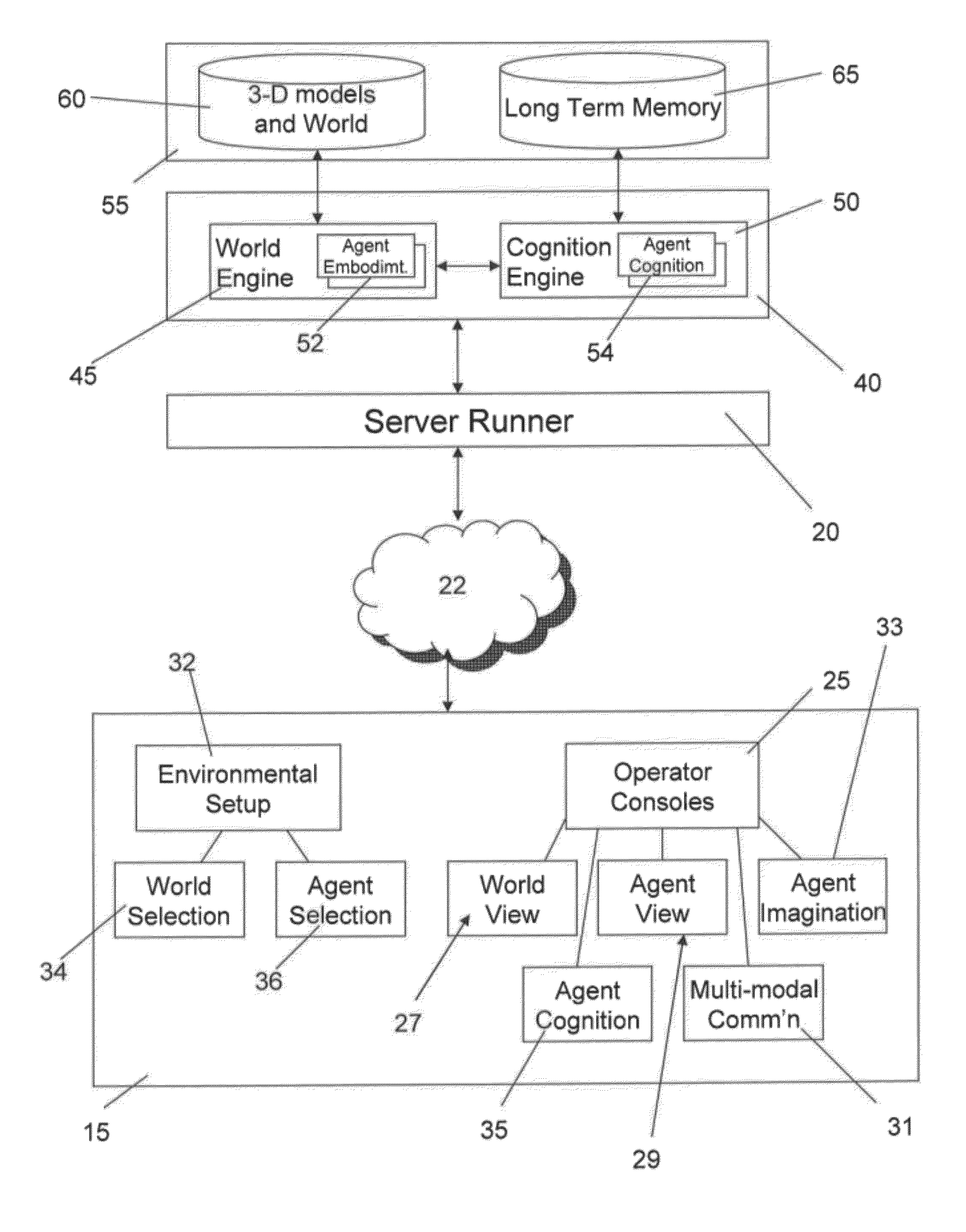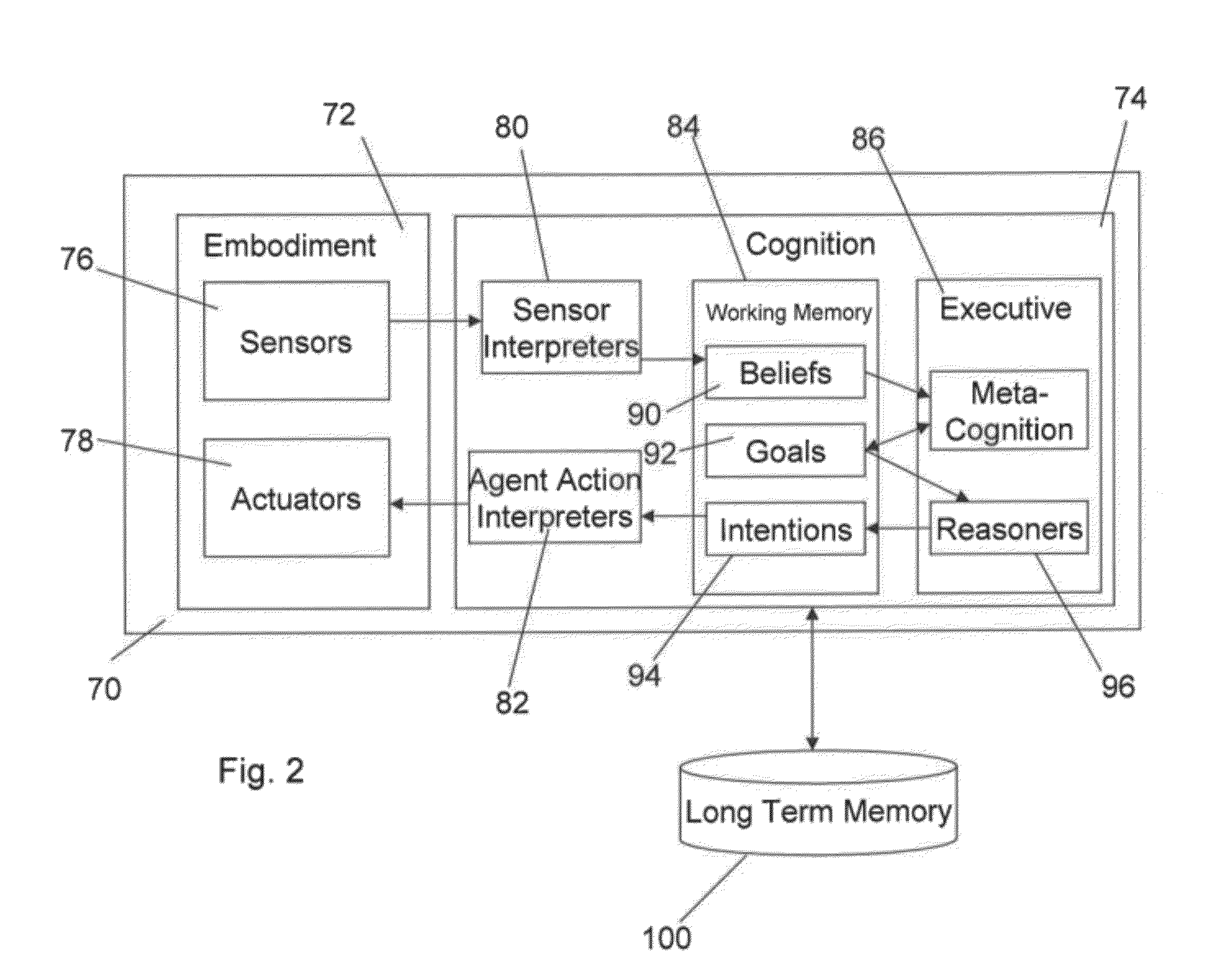System and Method for Enhancing Locative Response Abilities of Autonomous and Semi-Autonomous Agents
a technology of locative response and system, applied in the field of system and method for enhancing locative response abilities of autonomous and semi-autonomous agents, can solve the problems of limited conversational abilities of state-of-the-art autonomous agents in physical and virtual worlds, inability to answer locative queries, and limited agent autonomy, so as to achieve the effect of improving locative question answering and simplifying the process
- Summary
- Abstract
- Description
- Claims
- Application Information
AI Technical Summary
Benefits of technology
Problems solved by technology
Method used
Image
Examples
Embodiment Construction
[0016]As shown in FIG. 1, the system 10 of the present invention can be implemented in a modular client server architecture, with different sets of plug-and-play components, including one or more operator clients 15, access server runner 20, engine 40 and knowledge bases 55. The system of the present invention is a computer-based system, where the components can be implemented in hardware, software, firmware, or combinations thereof. It will be appreciated that the system of the present invention incorporates necessary processing power and memory for storing data and programming that can be employed by one or more processors to carry out the functions and communications necessary to facilitate the processes and functionalities described herein. In one embodiment, the components, sub-components and / or modules associated with the present invention can be implemented using object oriented languages such as C++ or Java using well defined software interfaces such that the implementation ...
PUM
 Login to View More
Login to View More Abstract
Description
Claims
Application Information
 Login to View More
Login to View More - R&D
- Intellectual Property
- Life Sciences
- Materials
- Tech Scout
- Unparalleled Data Quality
- Higher Quality Content
- 60% Fewer Hallucinations
Browse by: Latest US Patents, China's latest patents, Technical Efficacy Thesaurus, Application Domain, Technology Topic, Popular Technical Reports.
© 2025 PatSnap. All rights reserved.Legal|Privacy policy|Modern Slavery Act Transparency Statement|Sitemap|About US| Contact US: help@patsnap.com



